Engineering Properties of Basalt Fiber-Reinforced Bottom Ash Cement Paste Composites
Abstract
:1. Introduction
2. Materials and Methods
2.1. Materials
2.1.1. Cement and Bottom Ash
2.1.2. Basalt Fiber
2.2. Sample Preparation
3. Results and Discussion
3.1. Effects of Basalt Fiber on Physical Properties
3.2. Effects of Basalt Fiber on Mechanical Properties
3.3. Effects of Basalt Fiber on Durability Properties
4. Conclusions
- (1)
- The addition of basalt fiber improves the workability of the composites at a lower volume fraction. Beyond a 0.3% basalt fiber addition, the decrease in flow values was reported for all mixture groups.
- (2)
- The porosity of the composites increases as the basalt fiber volume fraction increases. The compactability of the fiber is adversely affected beyond 0.3% volume fraction.
- (3)
- The dry unit weight of the composites is classified as light weight. The produced composites have superior physical, mechanical, and chemical stability, which makes them an alternative sustainable construction material. Additionally, the mixture proportioning in this study can help for the development of sustainability strategies in the concrete industry by utilizing bottom ash and basalt fiber as an alternative binder.
- (4)
- The addition of basalt fiber increases the water absorption of both mixture groups beyond 0.3% volume fraction. More cement paste is needed when basalt fiber is introduced into the system. This affects the pore system of the composites.
- (5)
- The addition of basalt fiber increases the compressive and flexural strength. Both strengths tend to decrease beyond 0.75% volume fraction.
- (6)
- The addition of basalt fibers seems to be effective in chemical stability. Basalt fiber improves the resistance of the composites against sulfate and seawater.
- (7)
- Microscopic investigation should be conducted for a better understanding of these novel-based pure cement paste composites, which contain basalt fiber and industrial waste. The authors believe that the formation of calcium silicate hydrates and dispersion of basalt fiber in the matrix governs the overall behavior of the composites and need further investigation.
Author Contributions
Funding
Acknowledgments
Conflicts of Interest
References
- Xu, J.; Deng, Y.; Shi, Y.; Huang, Y. A bi-level optimization approach for sustainable development and carbon emissions reduction towards construction materials industry: A case study from China. Sustain. Cities Soc. 2020, 53, 101828. [Google Scholar] [CrossRef]
- Wang, N. The role of the construction industry in China’s sustainable urban development. Habitat Int. 2014, 44, 442–450. [Google Scholar] [CrossRef]
- Horvath, A. Construction materials and the environment. Annu. Rev. Environ. Resour. 2004, 29, 181–204. [Google Scholar] [CrossRef]
- Frey, H.C.; Rasdorf, W.; Lewis, P. Comprehensive field study of fuel use and emissions of nonroad diesel construction equipment. Transp. Res. Rec. 2010, 69–76. [Google Scholar] [CrossRef]
- Mehta, B.Y.P.K.; Burrows, R.W. Building Durable Structures in the 21st Century. Indian Concr. J. 2001, 75, 437–443. [Google Scholar]
- Jaturapitakkul, C.; Cheerarot, R. Development of bottom ash as pozzolanic material. J. Mater. Civ. Eng. 2003, 15, 48–53. [Google Scholar] [CrossRef]
- Kurama, H.; Kaya, M. Usage of coal combustion bottom ash in concrete mixture. Constr. Build. Mater. 2008, 22, 1922–1928. [Google Scholar] [CrossRef]
- Topçu, I.B.; Bilir, T.; Uygunoǧlu, T. Effect of waste marble dust content as filler on properties of self-compacting concrete. Constr. Build. Mater. 2009, 23, 1947–1953. [Google Scholar] [CrossRef]
- Vardhan, K.; Siddique, R.; Goyal, S. Influence of marble waste as partial replacement of fine aggregates on strength and drying shrinkage of concrete. Constr. Build. Mater. 2019, 228, 116730. [Google Scholar] [CrossRef]
- Singh, N.; Shehnazdeep; Bhardwaj, A. Reviewing the role of coal bottom ash as an alternative of cement. Constr. Build. Mater. 2020, 233, 117276. [Google Scholar] [CrossRef]
- Aggarwal, P.; Aggarwal, Y.; Gupta, S.M. Effect of Bottom Ash as Replacement of Fine. Asian J. Civ. Eng. Build. Hous. Vol. 2007, 8, 49–62. [Google Scholar]
- Chun, L.B.; Sung, K.J.; Sang, K.T.; Chae, S.T. A study on the fundamental properties of concrete incorporating pond-ash in Korea. In Proceedings of the ACF 3rd International Conference, Ho Chi Minh City, Vietnam, 11–13 November 2008; pp. 401–408. [Google Scholar]
- Yüksel, I.; Genç, A. Properties of concrete containing nonground ash and slag as fine aggregate. ACI Mater. J. 2007, 104, 397–403. [Google Scholar]
- Kou, S.C.; Poon, C.S. Properties of concrete prepared with crushed fine stone, furnace bottom ash and fine recycled aggregate as fine aggregates. Constr. Build. Mater. 2009, 23, 2877–2886. [Google Scholar] [CrossRef]
- Wongkeo, W.; Thongsanitgarn, P.; Pimraksa, K.; Chaipanich, A. Compressive strength, flexural strength and thermal conductivity of autoclaved concrete block made using bottom ash as cement replacement materials. Mater. Des. 2012, 35, 434–439. [Google Scholar] [CrossRef]
- Aydin, E. Novel coal bottom ash waste composites for sustainable construction. Constr. Build. Mater. 2016, 124, 582–588. [Google Scholar] [CrossRef]
- Yao, W.; Li, J.; Wu, K. Mechanical properties of hybrid fiber-reinforced concrete at low fiber volume fraction. Cem. Concr. Res. 2003, 33, 27–30. [Google Scholar] [CrossRef]
- Corinaldesi, V.; Nardinocchi, A. Influence of type of fibers on the properties of high performance cement-based composites. Constr. Build. Mater. 2016, 107, 321–331. [Google Scholar] [CrossRef]
- Jun, L.; Yong-sheng, J.; Cheng, J.; Zhishan, X. Improvement and mechanism of the mechanical properties of magnesium ammonium phosphate cement with Chopped fibers. Constr. Build. Mater. 2020, 243, 118262. [Google Scholar] [CrossRef]
- Feng, H.; Sheikh, M.N.; Hadi, M.N.S.; Gao, D.; Zhao, J. Mechanical properties of micro-steel fibre reinforced magnesium potassium phosphate cement composite. Constr. Build. Mater. 2018, 185, 423–435. [Google Scholar] [CrossRef]
- Aydin, E. Data for the physical and mechanical properties of staple fibers cement paste composites. Data Br. 2017, 14, 307–312. [Google Scholar] [CrossRef]
- Aydin, E. Staple wire-reinforced high-volume fly-ash cement paste composites. Constr. Build. Mater. 2017, 153, 393–401. [Google Scholar] [CrossRef]
- Corinaldesi, V.; Nardinocchi, A.; Donnini, J. The influence of expansive agent on the performance of fibre reinforced cement-based composites. Constr. Build. Mater. 2015, 91, 171–179. [Google Scholar] [CrossRef]
- Georgiou, A.V.; Pantazopoulou, S.J. Effect of fiber length and surface characteristics on the mechanical properties of cementitious composites. Constr. Build. Mater. 2016, 125, 1216–1228. [Google Scholar] [CrossRef]
- Hwang, C.L.; Tran, V.A.; Hong, J.W.; Hsieh, Y.C. Effects of short coconut fiber on the mechanical properties, plastic cracking behavior, and impact resistance of cementitious composites. Constr. Build. Mater. 2016, 127, 984–992. [Google Scholar] [CrossRef]
- Sun, X.; Gao, Z.; Cao, P.; Zhou, C. Mechanical properties tests and multiscale numerical simulations for basalt fiber reinforced concrete. Constr. Build. Mater. 2019, 202, 58–72. [Google Scholar] [CrossRef]
- Khan, M.; Cao, M.; Ali, M. Effect of basalt fibers on mechanical properties of calcium carbonate whisker-steel fiber reinforced concrete. Constr. Build. Mater. 2018, 192, 742–753. [Google Scholar] [CrossRef]
- Sim, J.; Park, C.; Moon, D.Y. Characteristics of basalt fiber as a strengthening material for concrete structures. Compos. Part B Eng. 2005, 36, 504–512. [Google Scholar] [CrossRef]
- Gamal, T.S.F.; Chiadighikaobi, P.C. Comparative analysis of reliability of non-destructive methods of strength control of concrete impregnated with vegetable oil: Basalt fiber for increasing the concrete strength. Mater. Today Proc. 2019, 19, 2479–2482. [Google Scholar] [CrossRef]
- Dong, J.F.; Wang, Q.Y.; Guan, Z.W. Material properties of basalt fibre reinforced concrete made with recycled earthquake waste. Constr. Build. Mater. 2017, 130, 241–251. [Google Scholar] [CrossRef]
- Wang, Y.; Hughes, P.; Niu, H.; Fan, Y. A new method to improve the properties of recycled aggregate concrete: Composite addition of basalt fiber and nano-silica. J. Clean. Prod. 2019, 236, 117602. [Google Scholar] [CrossRef]
- Ahmad, M.R.; Chen, B. Microstructural characterization of basalt fiber reinforced magnesium phosphate cement supplemented by silica fume. Constr. Build. Mater. 2020, 237, 117795. [Google Scholar] [CrossRef]
- Padalu, P.K.V.R.; Singh, Y.; Das, S. Efficacy of basalt fibre reinforced cement mortar composite for out-of-plane strengthening of unreinforced masonry. Constr. Build. Mater. 2018, 191, 1172–1190. [Google Scholar] [CrossRef]
- Fenu, L.; Forni, D.; Cadoni, E. Dynamic behaviour of cement mortars reinforced with glass and basalt fibres. Compos. Part B Eng. 2016, 92, 142–150. [Google Scholar] [CrossRef]
- Castaldo, P.; Gino, D.; Mancini, G. Safety formats for non-linear finite element analysis of reinforced concrete structures: Discussion, comparison and proposals. Eng. Struct. 2019, 193, 136–153. [Google Scholar] [CrossRef]
- ASTM C109 / C109M-20. Standard Test Method for Compressive Strength of Hydraulic Cement Mortars (Using 2-in. or [50-mm] Cube Specimens); ASTM International: West Conshohocken, PA, USA, 2020.
- ASTM C348-19. Standard Test Method for Flexural Strength of Hydraulic-Cement Mortars; ASTM International: West Conshohocken, PA, USA, 2019.
- Aydin, E.; Arel, H.Ş. High-volume marble substitution in cement-paste: Towards a better sustainability. J. Clean. Prod. 2019, 237, 117801. [Google Scholar] [CrossRef]
- ASTM C127-15. Standard Test Method for Relative Density (Specific Gravity) and Absorption of Coarse Aggregate; ASTM International: West Conshohocken, PA, USA, 2015.
- ASTM C230-14. Standard Specification for Flow Table for Use in Tests of Hydraulic Cement; ASTM International: West Conshohocken, PA, USA, 2014.
- ASTM C88-18. Standard Test Method for Soundness of Aggregates by Use of Sodium Sulfate or Magnesium Sulfate; ASTM International: West Conshohocken, PA, USA, 2018.
- Ferraris, C.; Stutzman, P.; Snyder, K. Sulfate Resistance of Concrete: A New Approach. In PCA R&D Ser. No. 2486; Portland Cement Association: Skokie, IL, USA, 2006. [Google Scholar]
- Li, L.G.; Zeng, K.L.; Ouyang, Y.; Kwan, A.K.H. Basalt fibre-reinforced mortar: Rheology modelling based on water film thickness and fibre content. Constr. Build. Mater. 2019, 229, 116857. [Google Scholar] [CrossRef]
- Qin, J.; Qian, J.; Li, Z.; You, C.; Dai, X.; Yue, Y.; Fan, Y. Mechanical properties of basalt fiber reinforced magnesium phosphate cement composites. Constr. Build. Mater. 2018, 188, 946–955. [Google Scholar] [CrossRef]
- Sadrmomtazi, A.; Tahmouresi, B.; Saradar, A. Effects of silica fume on mechanical strength and microstructure of basalt fiber reinforced cementitious composites (BFRCC). Constr. Build. Mater. 2018, 162, 321–333. [Google Scholar] [CrossRef]
- Ralegaonkar, R.; Gavali, H.; Aswath, P.; Abolmaali, S. Application of chopped basalt fibers in reinforced mortar: A review. Constr. Build. Mater. 2018, 164, 589–602. [Google Scholar] [CrossRef]
- Algin, Z.; Ozen, M. The properties of chopped basalt fibre reinforced self-compacting concrete. Constr. Build. Mater. 2018, 186, 678–685. [Google Scholar] [CrossRef]
- Saloni; Parveen; Pham, T.M. Enhanced properties of high-silica rice husk ash-based geopolymer paste by incorporating basalt fibers. Constr. Build. Mater. 2020, 245, 118422. [Google Scholar] [CrossRef]
- Ahmad, M.R.; Chen, B. Effect of silica fume and basalt fiber on the mechanical properties and microstructure of magnesium phosphate cement (MPC) mortar. Constr. Build. Mater. 2018, 190, 466–478. [Google Scholar] [CrossRef]
- Chidighikaobi, P.C. Thermal effect on the flexural strength of expanded clay lightweight basalt fiber reinforced concrete. Mater. Today Proc. 2019, 19, 2467–2470. [Google Scholar] [CrossRef]
- Pehlivanli, Z.O.; Uzun, I.; Demir, I. Mechanical and microstructural features of autoclaved aerated concrete reinforced with autoclaved polypropylene, carbon, basalt and glass fiber. Constr. Build. Mater. 2015, 96, 428–433. [Google Scholar] [CrossRef]
- Afroz, M.; Patnaikuni, I.; Venkatesan, S. Chemical durability and performance of modified basalt fiber in concrete medium. Constr. Build. Mater. 2017, 154, 191–203. [Google Scholar] [CrossRef]
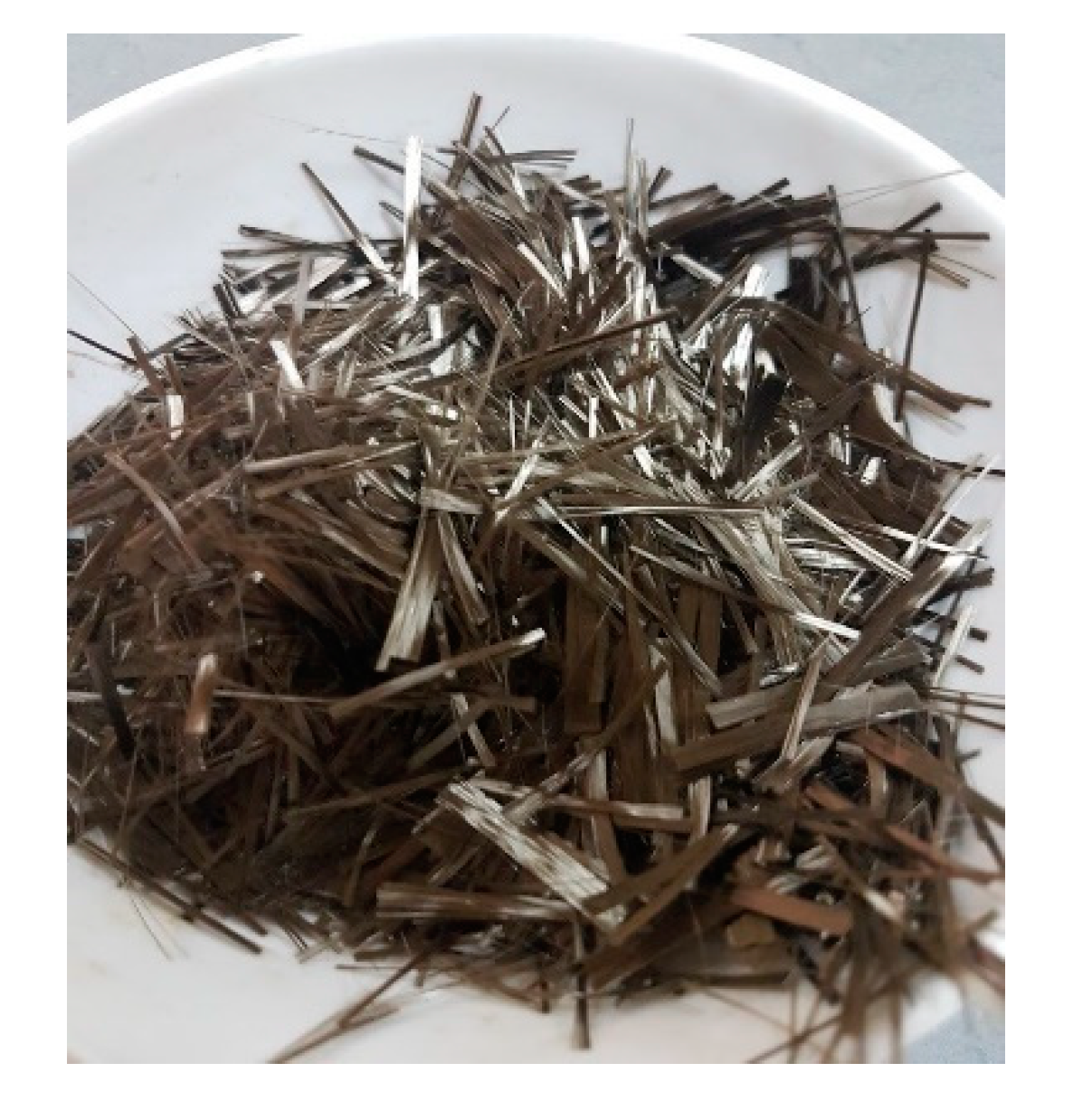
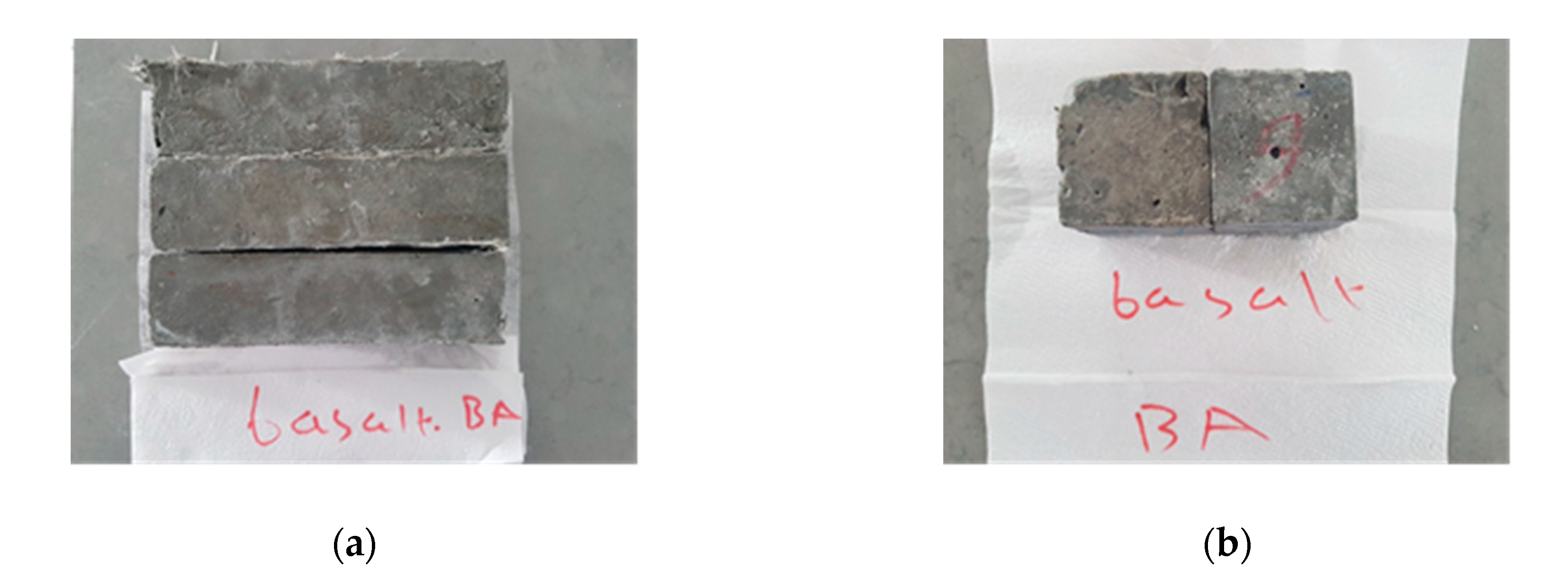
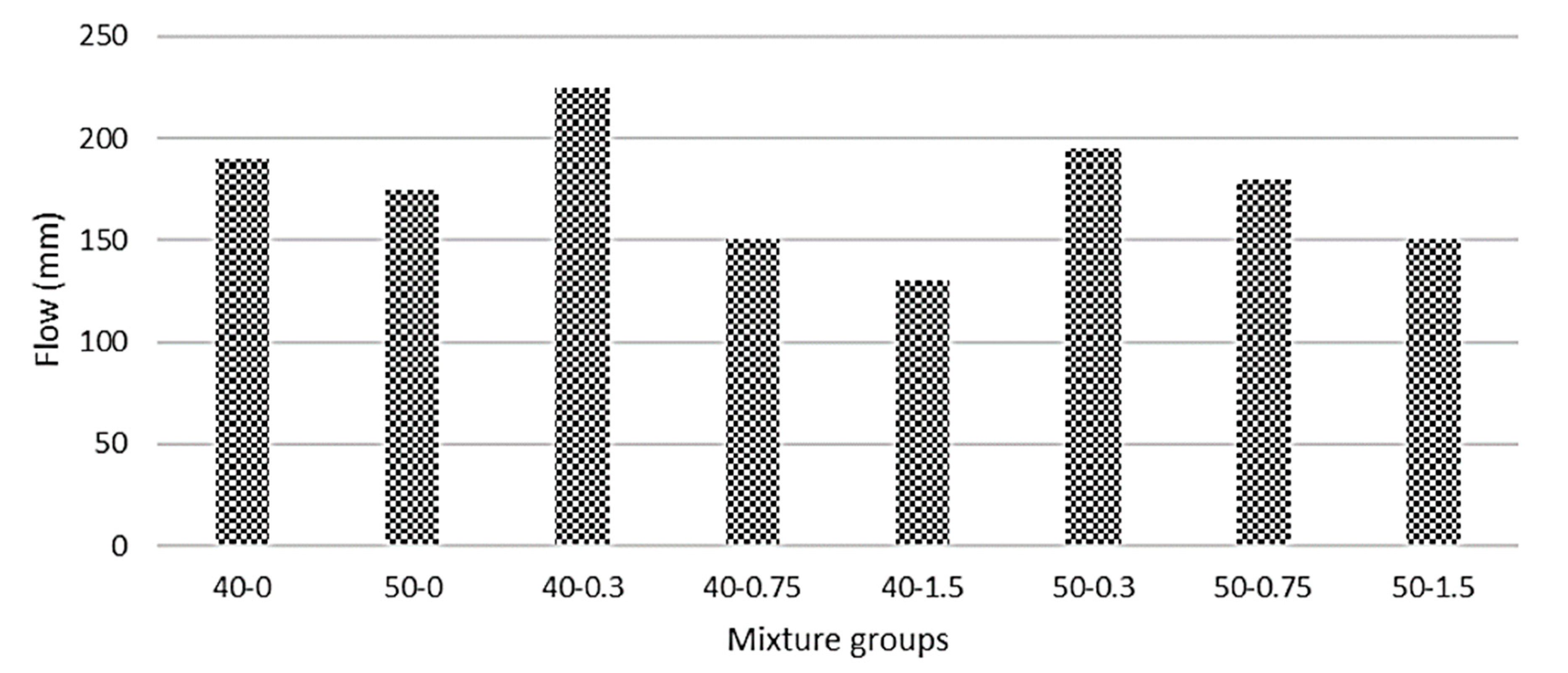
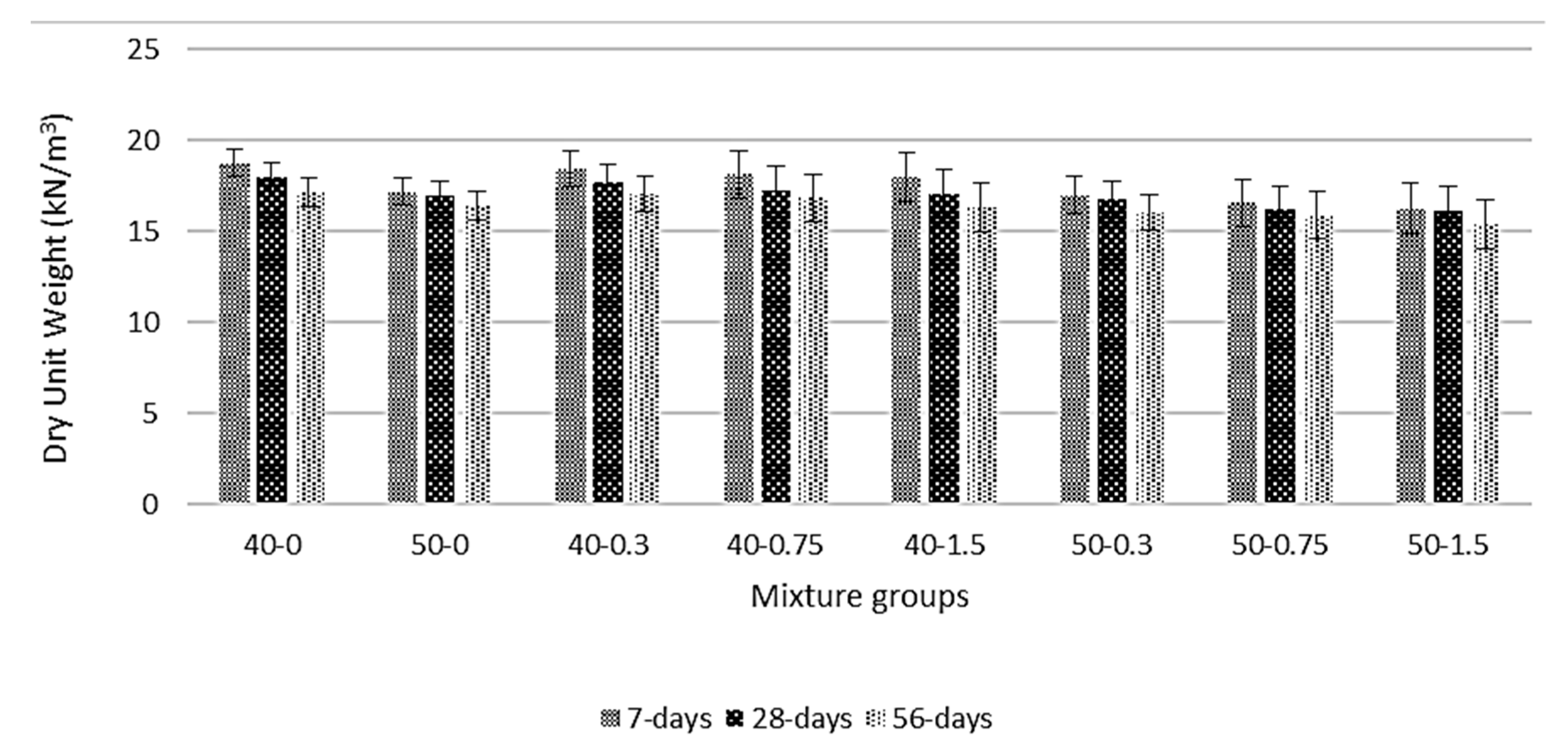
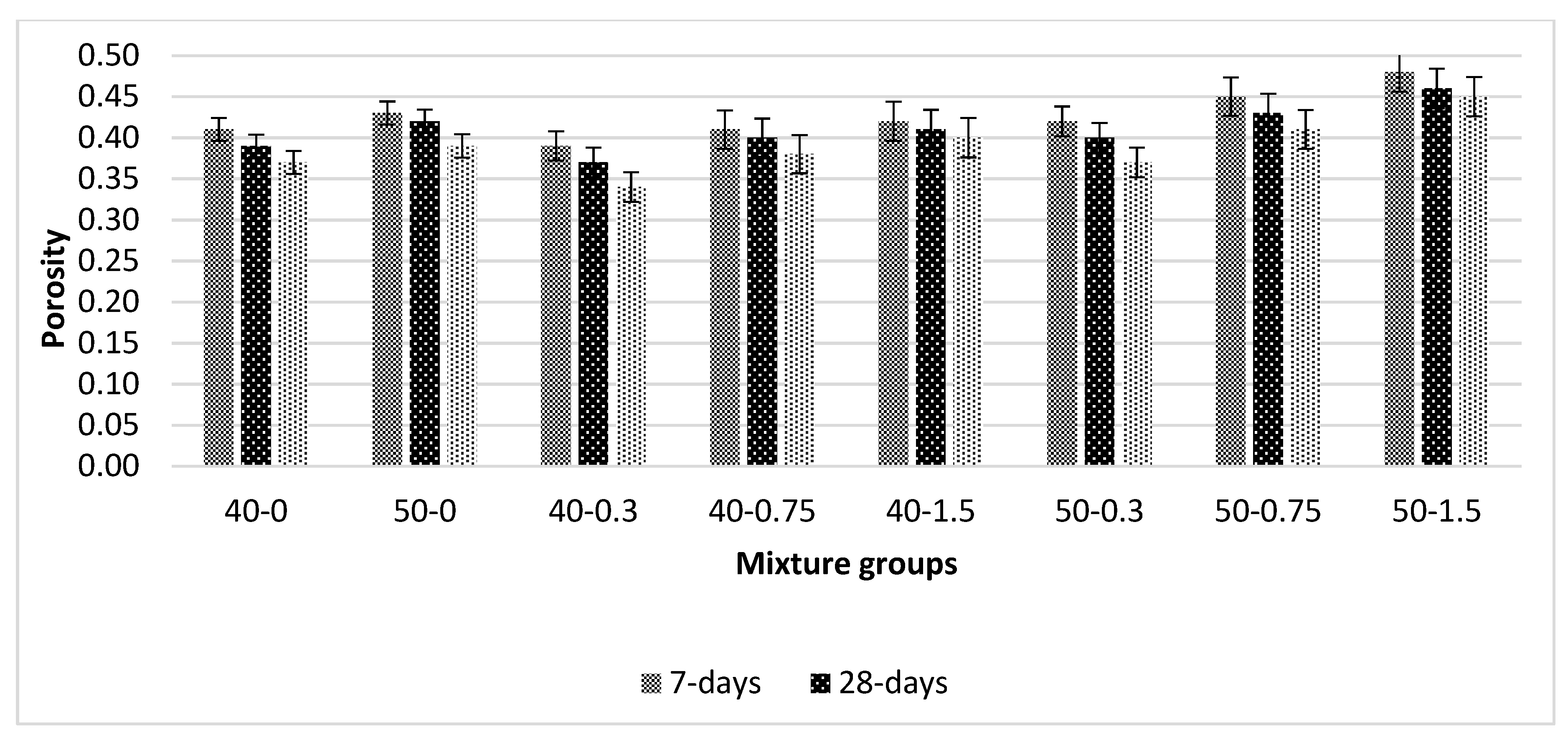
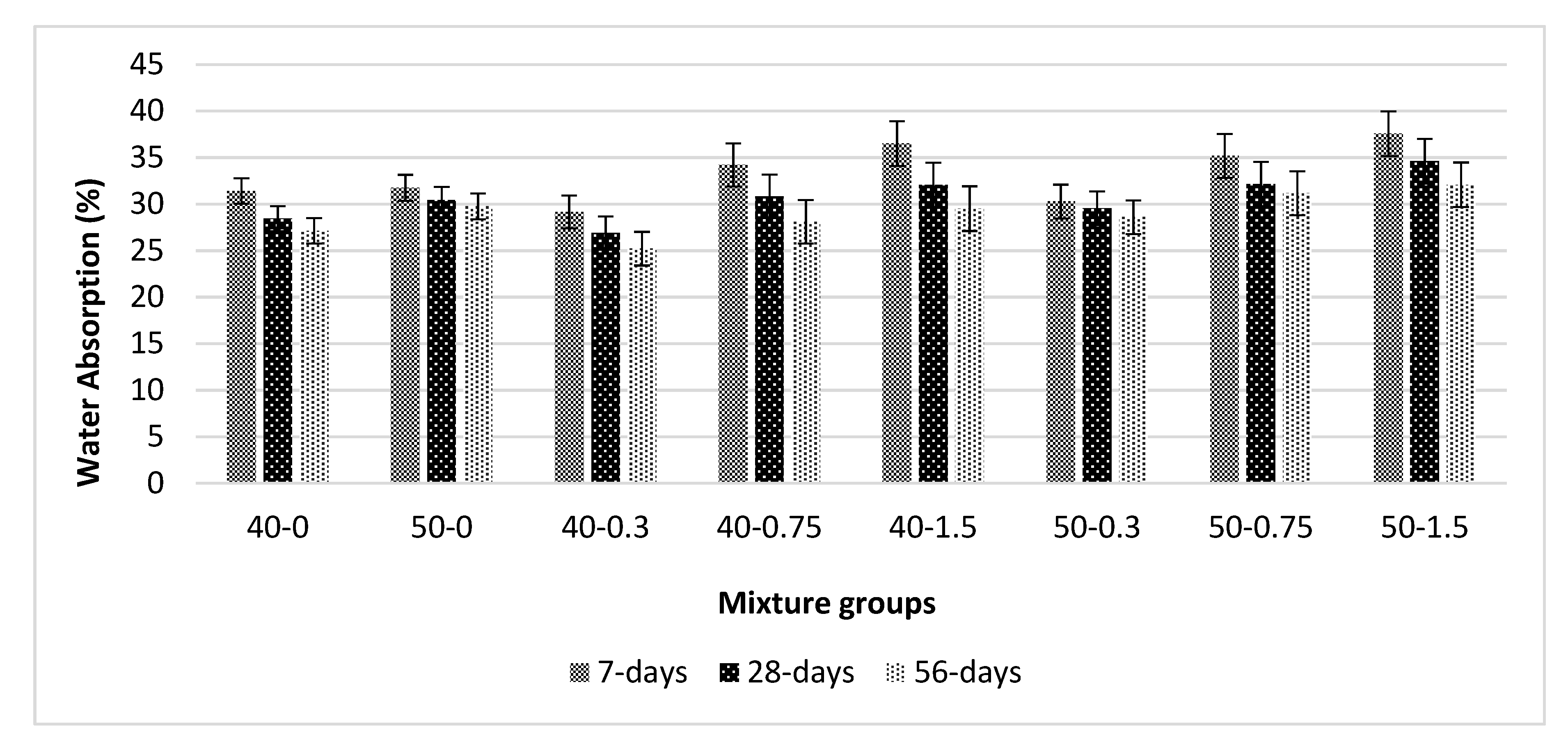
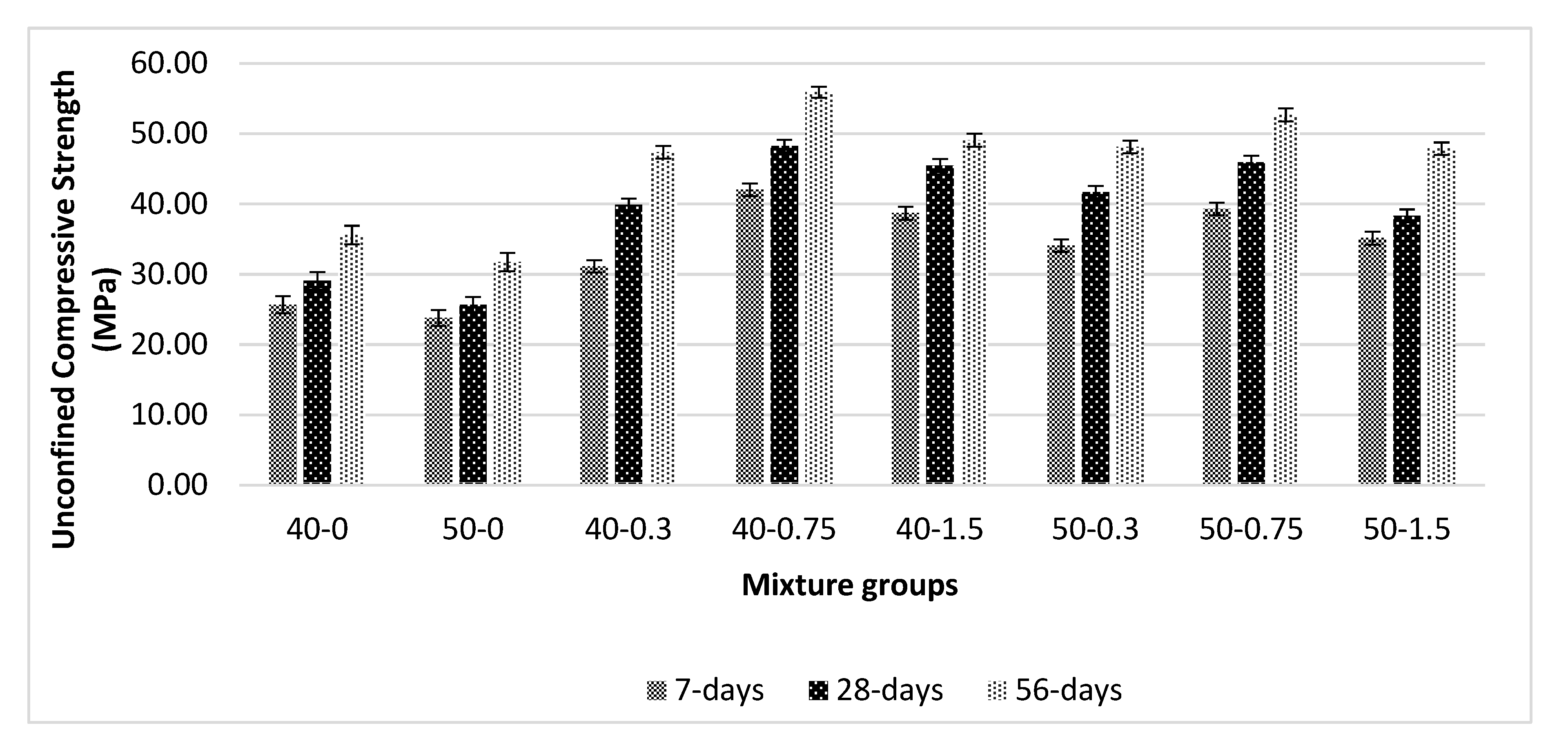
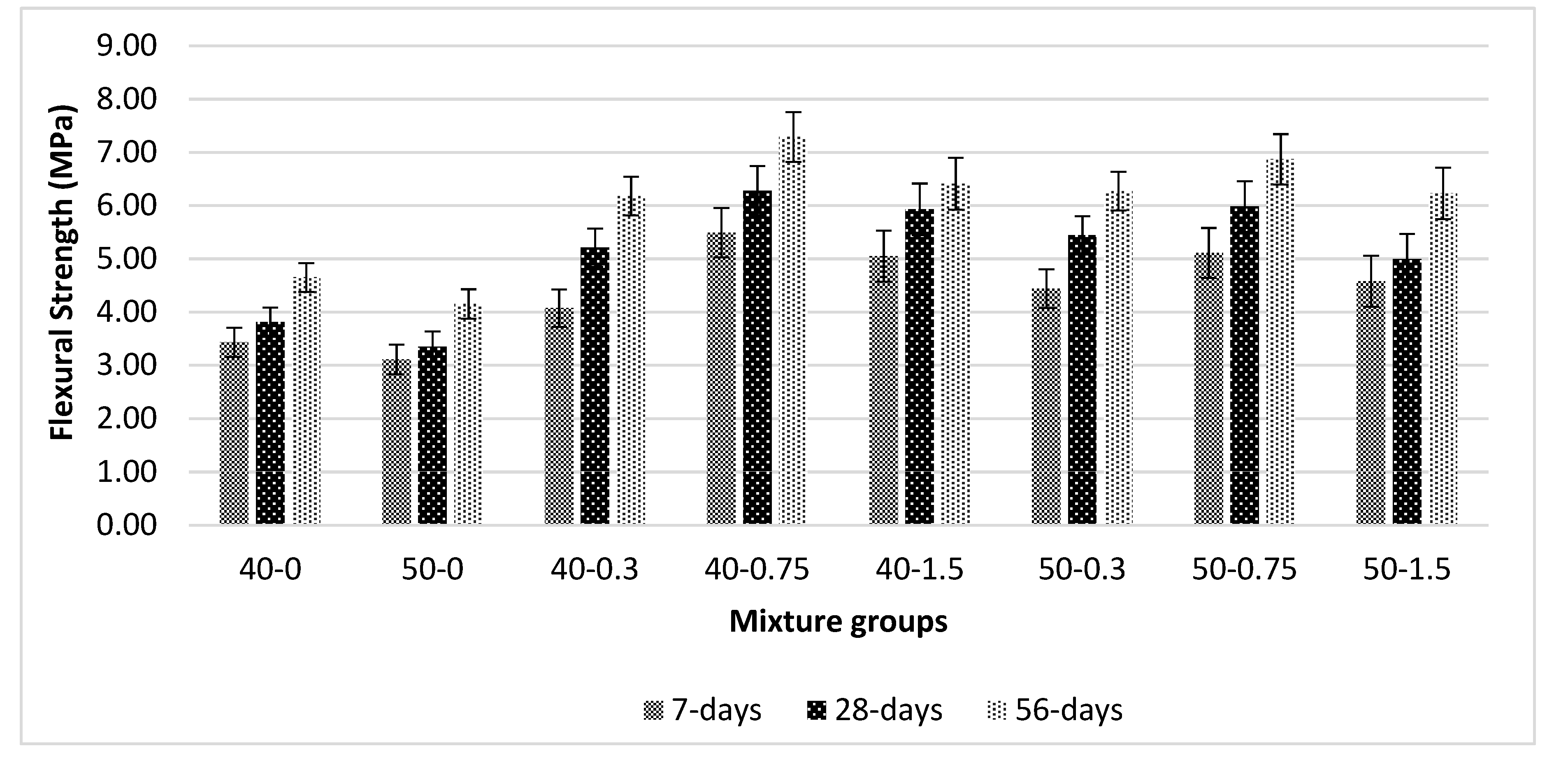
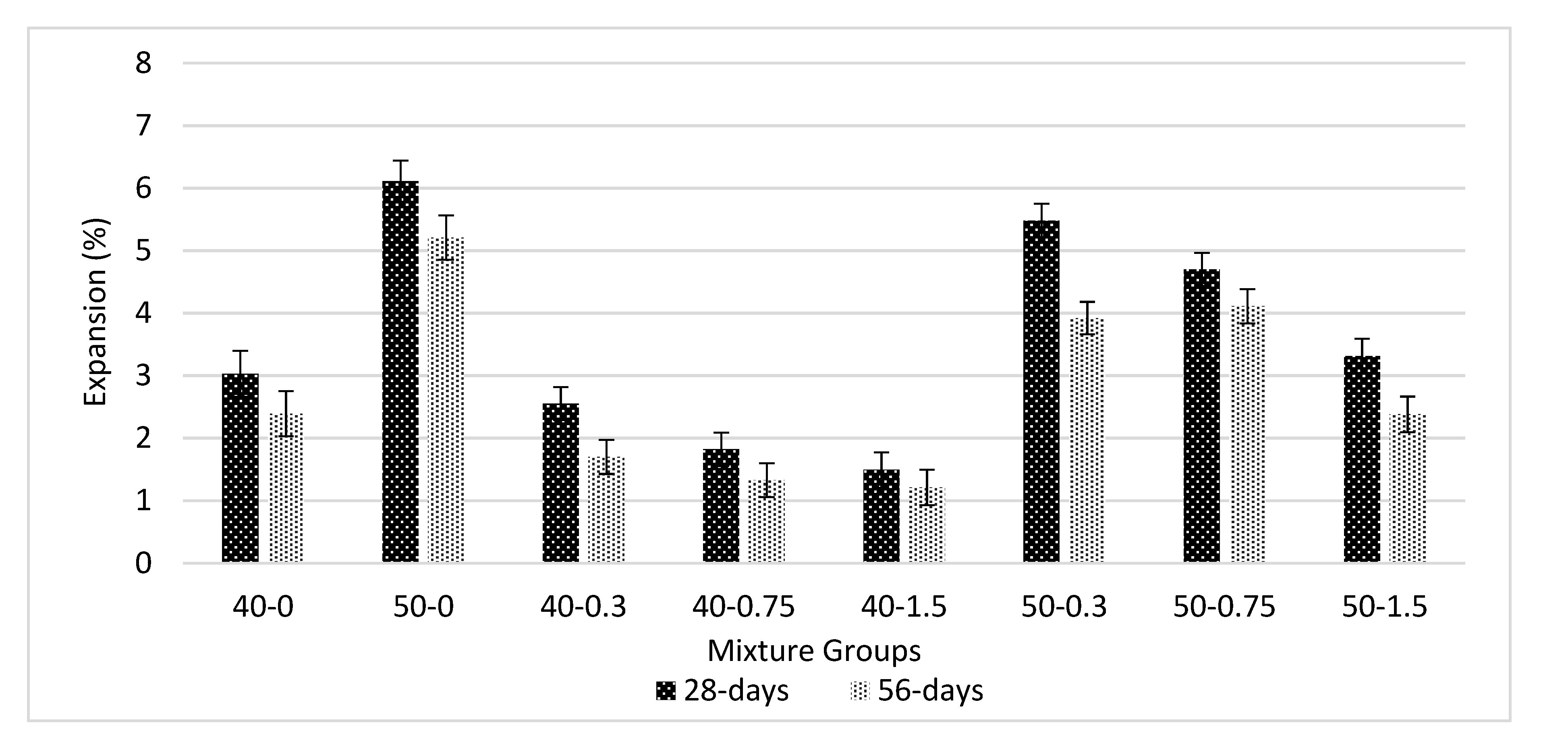
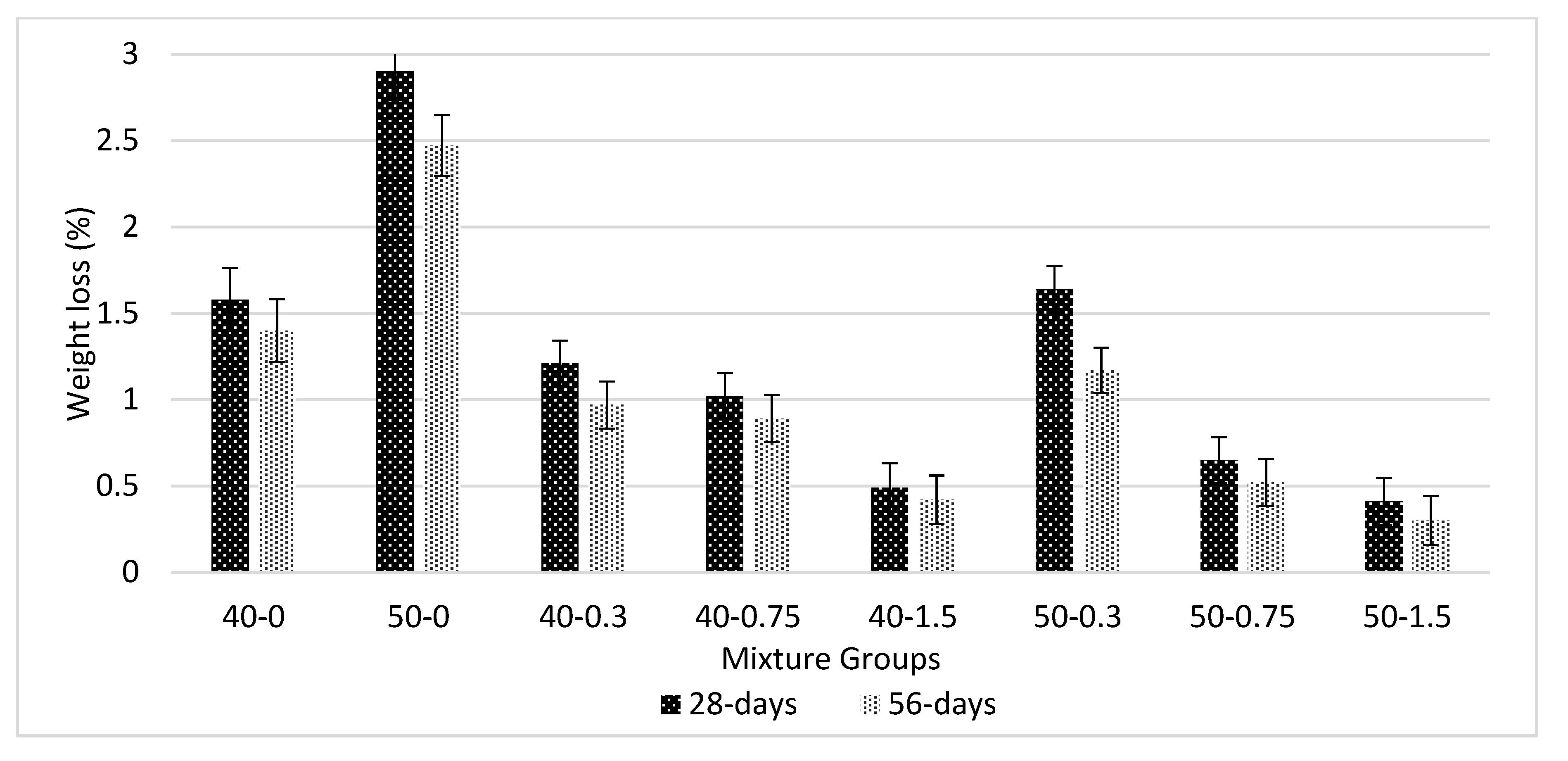
| Oxides (%) | Cement | Bottom Ash |
|---|---|---|
| SiO2 | 21.7 | 57.3 |
| Al2O3 | 4.8 | 28.1 |
| Fe2O3 | 3.9 | 6.1 |
| CaO | 63.6 | 1.4 |
| MgO | 0.3 | 0.2 |
| K2O | 0.3 | 0.8 |
| SO3 | 1.4 | 0.7 |
| LOI a | 2.1 | 3.2 |
© 2020 by the authors. Licensee MDPI, Basel, Switzerland. This article is an open access article distributed under the terms and conditions of the Creative Commons Attribution (CC BY) license (http://creativecommons.org/licenses/by/4.0/).
Share and Cite
Hanafi, M.; Aydin, E.; Ekinci, A. Engineering Properties of Basalt Fiber-Reinforced Bottom Ash Cement Paste Composites. Materials 2020, 13, 1952. https://doi.org/10.3390/ma13081952
Hanafi M, Aydin E, Ekinci A. Engineering Properties of Basalt Fiber-Reinforced Bottom Ash Cement Paste Composites. Materials. 2020; 13(8):1952. https://doi.org/10.3390/ma13081952
Chicago/Turabian StyleHanafi, Mohamad, Ertug Aydin, and Abdullah Ekinci. 2020. "Engineering Properties of Basalt Fiber-Reinforced Bottom Ash Cement Paste Composites" Materials 13, no. 8: 1952. https://doi.org/10.3390/ma13081952
APA StyleHanafi, M., Aydin, E., & Ekinci, A. (2020). Engineering Properties of Basalt Fiber-Reinforced Bottom Ash Cement Paste Composites. Materials, 13(8), 1952. https://doi.org/10.3390/ma13081952






